Laughably Easy.
That’s how I would describe hitting targets at 1000 yards with the MPA BA Lite PCR Competition Rifle, MasterPiece Arms’ new rifle for use in the production class of the Precision Rifle Series. I dialed in the trued data and pressed the trigger. Thanks to the low recoil of 6.5 Creedmoor, the scope stayed on target and 1.39 seconds later I witnessed a first round hit.. It’s not often I am impressed by a firearm, but the BA Lite PCR certainly accomplished that.
First Impressions:

These come from the same factory? It’s like the firearm version of the movie Twins
When I heard I would be testing a long-range precision rifle from MasterPiece Arms, I was somewhat bemused. I had known MasterPiece more for their MAC-pattern pistols, such as the MPA10. To my own fault, I had been ignorant of how extensively the company was involved in long range precision, hosting both precision rifle matches and long range training courses under the Aegis of MPA BA Academy. Their investment in long-range precision has paid off, as such capability is definitely within the wheelhouse of their MPA BA series of rifles. The PCR was specially designed for the Precision Rifle Series, as covered by our own Richard Johnson back in May. The PCR, as I’ll refer to it from now on, came in a standard plastic hardcase. At first glance, it looked like a Savage 10 BA Stealth with a skeletonized stock, but had many more features upon closer inspection. The BA Lite PCR sits within MPA’s “Lite” aluminum chassis. Machined from 6061 aluminum, my example came in their “burnt bronze” color. The stock had a nice bubble level built right into the bore line, rearward of the safety.
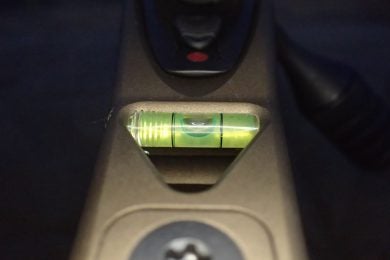
Great placement of bubble level was easy to check whenever I was on the gun
The stock also had a machined thumb notch on both sides above the grip, and was set up for a spigot mount. Upon first picking up the rifle, I noticed it was very front heavy due to the combination of the light chassis and the heavy 26″ Bergara barrel.
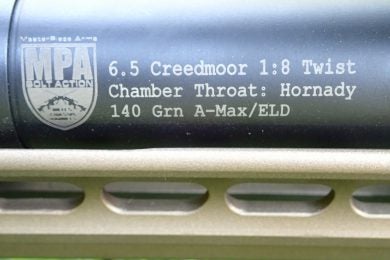
Custom chambered barrel
Total weight of the rifle was 14.4lbs when combined with a Leupold Mark IV scope and GG&G one piece QD scope mount, so the “Lite” is relative. The action and bolt were straight up from a factory Savage Model 12. I suspect that the bolt and action are the main cost-saving difference when comparing the PCR to the other MPA BA rifles which feature Kelby Atlas (blue-printed Remington 700-style) premium actions. Working the bolt was…well, what you would expect from a Savage model 12. After lifting the bolt 90 degrees, the bolt worked back and forth somewhat haltingly and loosely. As I’ll cover later, it is the one weakness of this rifle. The Rifle Basix trigger, however, was excellent and cleanly broke at 2lbs each and every time as measured from a Lyman digital gauge. The rifle also came with Magpul’s excellent AICS short action Pmag.
Range Time:
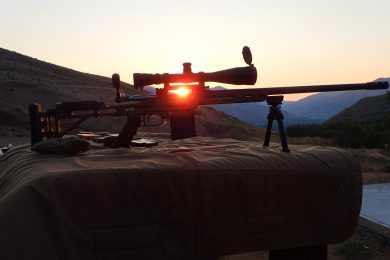
The best way to watch sunrise…at the range!
I had the opportunity to test out the PCR for accuracy and reliability prior to putting it through Hughston Shooting School’s full-fledged 250 round Long-Range Precision Rifle Course. Armed with the aforementioned Vortex Optics LRBC data, I headed out to the range to try out 5 different loads to see which were the most accurate. The length of pull and cheek riser are adjustable via set screws, but seemed to work just perfectly for me out of the box. I was all set to settle into some shooting. Accuracy results are as follows. All groups are 5 shots@100 yards, measured center-center and supported by an Atlas bipod and small rear bag.
- Hornady 140gr ELD Match: .402″
- Hornady 143gr ELD-X Precision Hunter: .544″
- Hornady 120gr A-Max: .884″
- Hornady 129gr Interlock American Whitetail: .815″
- American Eagle 140gr OTM: 1.284″
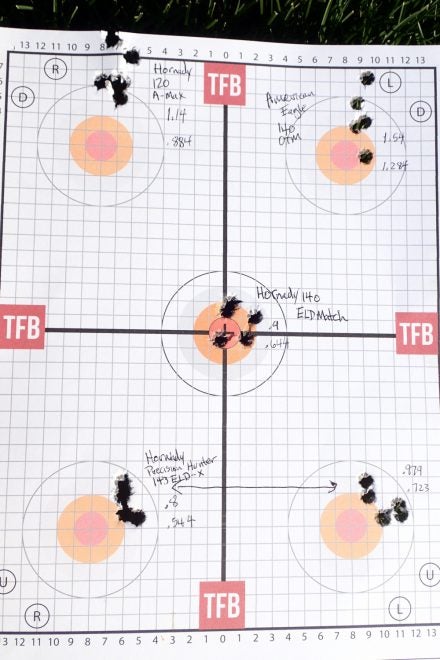
All rounds tested performed well, with the exception of American eagle which exhibited quite a vertical spread
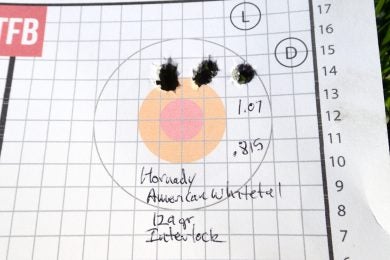
Pleased to see that the barrel and cartridge it was custom chambered for matched up well together, I tried a few more accuracy tests. Firing a cold-bore shot and then a 5-shot group immediately thereafter yielded a shift of .25 MOA down and left, with the above-mentioned group of .402″ coming from the 140gr ELD rounds. I then fired a rapid 10 shots in under 15 seconds with a resultant group of 1.062″.
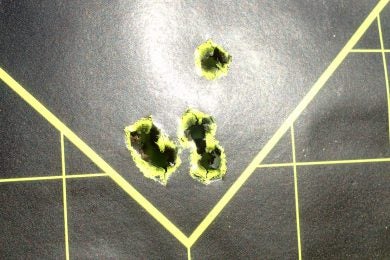
Cold bore and subsequent 5-shot group
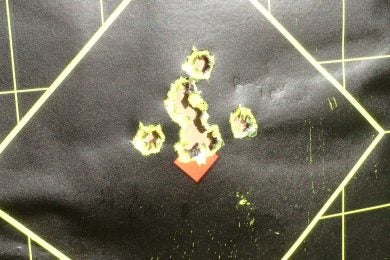
Rapid-fire 10 shot group
The one negative I should mention for the day was that the bolt did indeed give me a headache a few times. I couldn’t manipulate it very fast due to the long throw. The loose jerkiness of the bolt in the raceway combined with the Model 12 action’s push feed nature resulted in a few misfeeds and failures of the bolt to grab onto the case head. Moving out to the furthest position I could get shots on paper at 360 yards resulted in a 3 round group of 1.549″ and a 5 round group of 2.05″, or .54 MOA@360y.
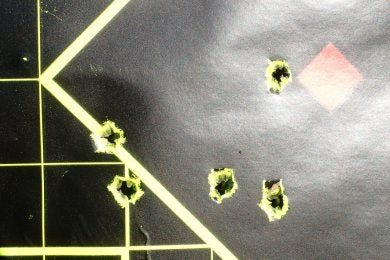
2.05″ at 360yards
Moving out to the 18×18″ plates at 500 and 825 yards was easy and resulted in first round hits followed by entire magazines of consecutive hits. The MPA High Performance brake combined with the mild 6.5CM loads made witnessing hits and staying on target for follow-up shots extremely facile. Moving back to the 1000 yard target was my final test of my data and the rifle for the day. After the first round 1000y hit and three follow-ups, I was a believer in this rifle. All told, I fired 140 rounds the first day, with 6 bolt-related malfunctions.
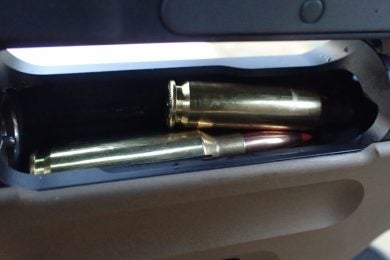
The curse of a poor push feed bolt…
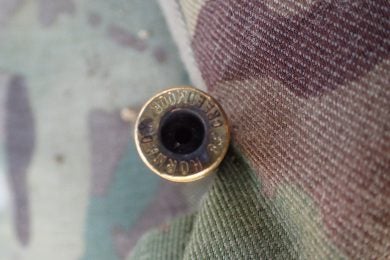
Not entirely sure of the cause…
The malfunctions were spread out over the Pmag, and AI mag, and an Accu-Mag, so magazines were not an exclusive source of my issues. I also had one blown primer which I couldn’t figure out if it was the fault of the bolt or the ammo.
Class Time
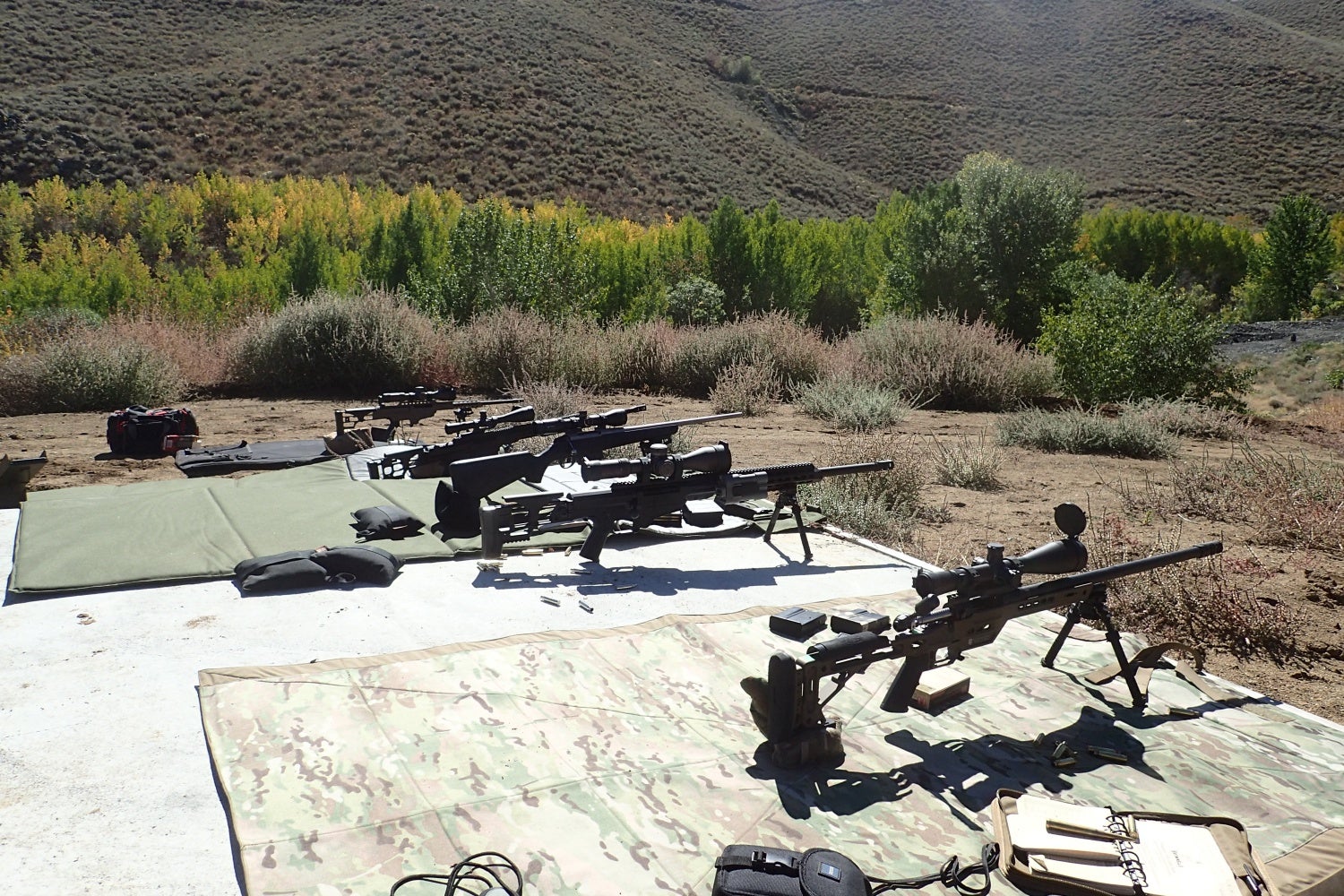
Rifles on the line for the class, PCR on the right
Thanks to MPA’s patience, I had the good fortune to test out the PCR further at Hughston Shooting School’s Long Range Precision Rifle Course. The range portion of the class day started with confirming zeroes at 100y. The PCR consistently shot tighter groups than the 6 other rifles, Barrett MRADS in .308 and .338LM as well as a SR-25 pattern AR. Moving out to 400 and 500 yards was no problem. The 140gr ELD loads seemed to outperform all other rounds, including the .338LM, at 825y and out in regards to bucking the wind. After dialing in a sweet spot in regards to bolt manipulation, I ceased to have so many problems, though sometimes the bolt would fail to pick up or push a round properly. I also really noticed how comfortable the stock was in regards to the cheek rest and thumb rest were after 6 hours straight at the range.
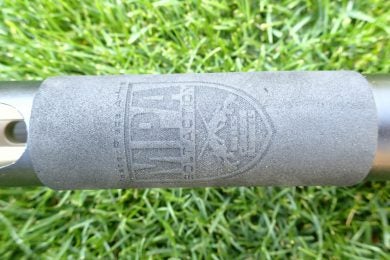
This cheek rest is right up there with the Bradley as far as being super comfortable
The real long-range test came at the end of the day, with a setting sun nearly directly in my scope while engaging targets at the transonic and subsonic distances of 1300 and 1600 yards. Engaging the 1300 yard target resulted in a first round hit! I was duly impressed. Moving to the 1600 yard target (9/10ths of a mile with a bullet flight time of 2.68 seconds) yielded a solid hit after 2 shots to read the 10-15 mph wind. With the right data and shooting fundamentals, this rifle proved it could perform out to very long distances.
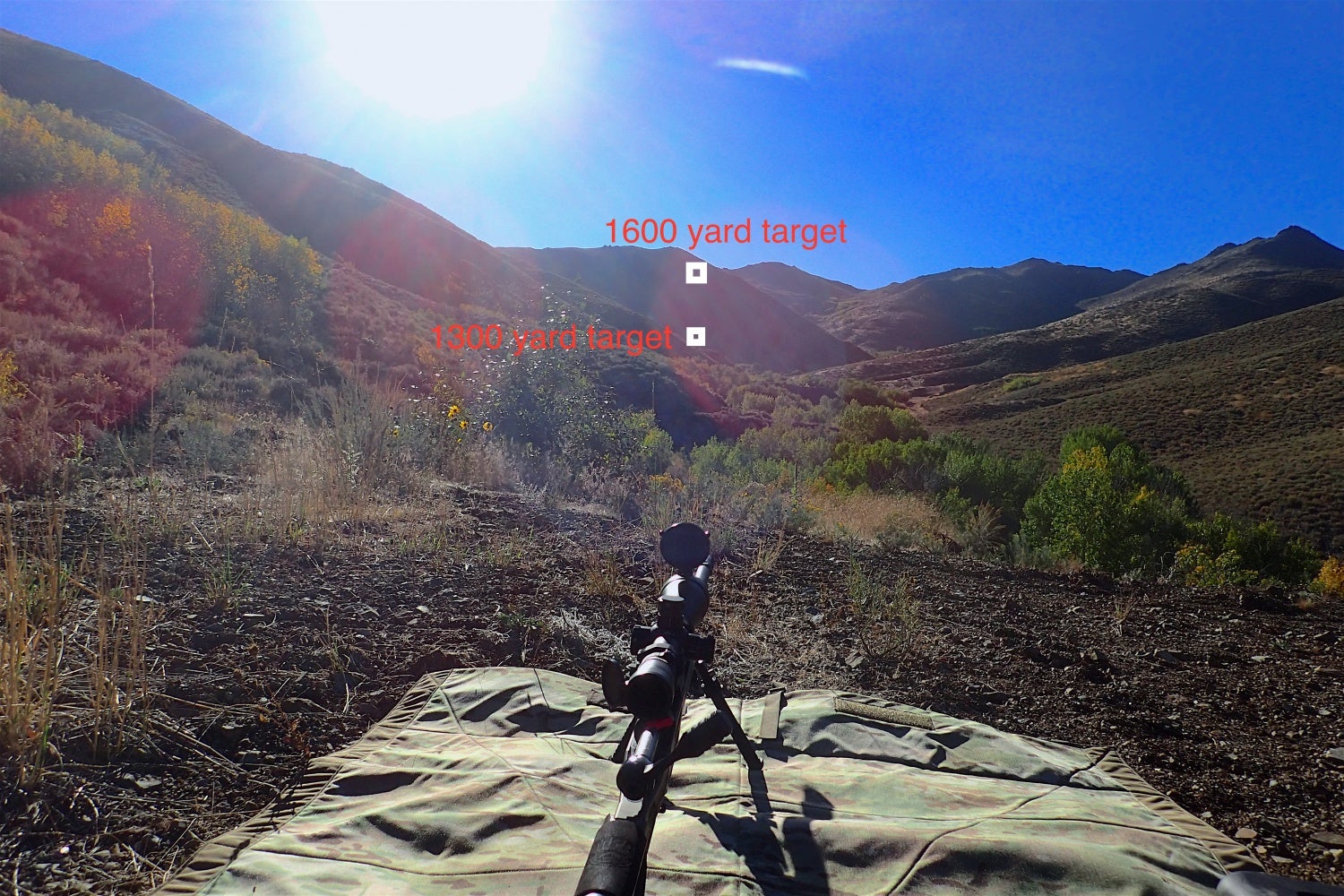
Now for the real test at 1300 and 1600 yards…
Conclusions:
The PCR, priced at $1999.99 MSRP in order to fit into the production class of the Precision Rifle Series, offers an outstanding value for the price. Accuracy-wise, it outperforms the Ruger Precision Rifle. It is just as accurate and more comfortable to shoot for long periods of time than many more expensive full-custom rifles. The cost-saving has its achilles heel, however in the Savage Model 12 bolt. This detriment may hinder speed and reliability of fast follow-up or transition shots. If money was no object, the MPA BA rifles with Kelby Atlas actions would be a much better and more reliable option. For the price, however, its an excellent choice to enter into the world of precision long-range shooting, and can provide outstanding accuracy at extreme ranges. I tested it as intended with a sub-$1000.00 scope, and it did exactly what it was designed to do with aplomb. The MPA BA Lite PCR had truly proved itself as an extremely capable long-range precision rifle in my opinion. 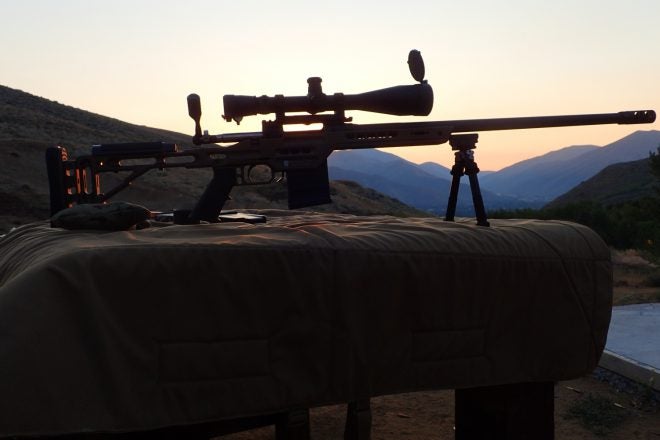
Pros:
- Relatively inexpensive for a semi-custom long-range rifle
- Qualifies for Production Class
- Capable of sub-1/2 MOA accuracy with the right ammo
- Excellent muzzle brake
- Extremely stable platform prone or off the bench
- Ergonomically well-designed chassis and cheek rest
- Accurate at 1.5km
Cons:
- That Savage 12 bolt….
- Awkward and front-heavy for shooting offhand or from non-traditional positions
For more information, please visit MPA’s site.
For more information on the Precision Rifle Series, please visit precisionrifleseries.com.
Thanks to Hughston Shooting School for range time, class time, and technical support!
 Your Privacy Choices
Your Privacy Choices
